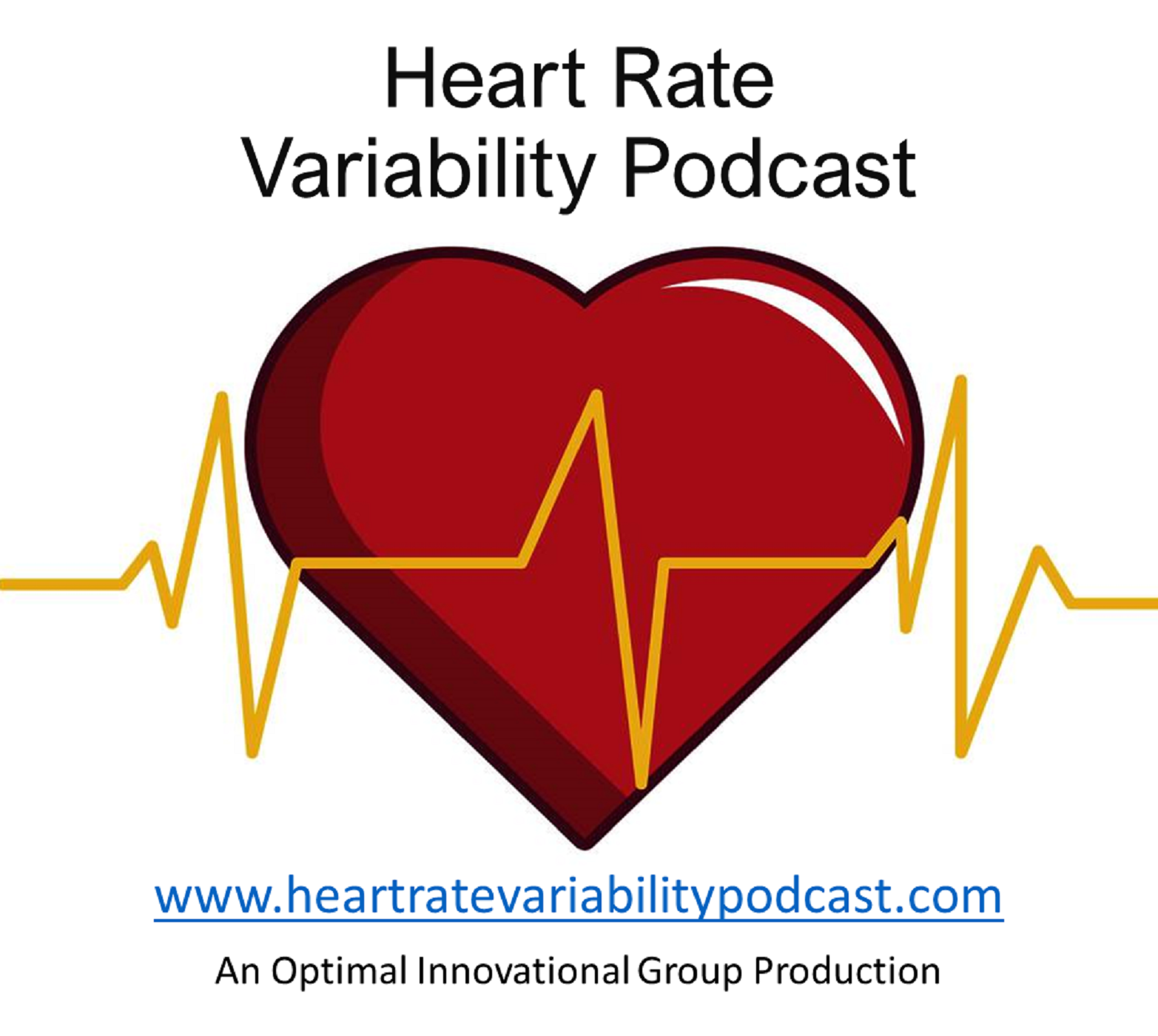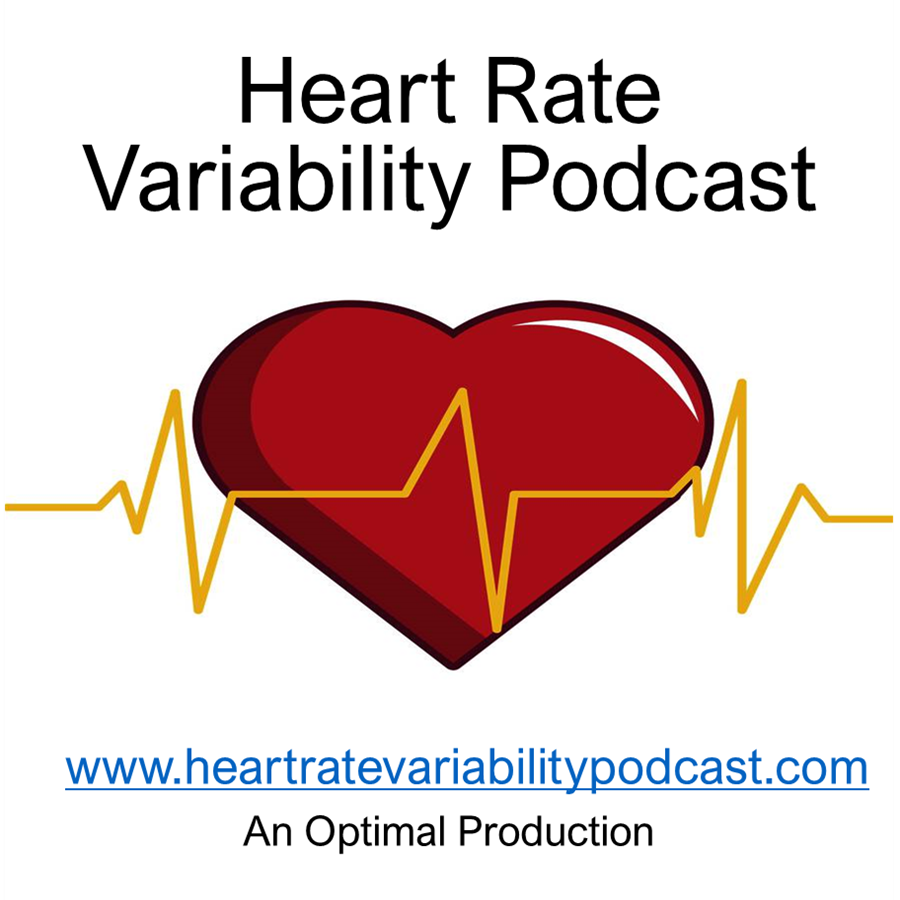Episode Transcript
[00:00:00] Happy Halloween and welcome to the Optimal HRV Halloween Special podcast episode. Tonight we're doing something a little different. We're putting aside the usual clinical studies on long term health and instead we're diving straight into the dark. Tonight we're talking about fright night physiology. We're talking about that feeling when you're the last one in the theater, the music has dropped out and you know something is behind the door. We're talking about that jolt you get when a costumed actor with a chainsaw leaps out of the fog in a haunted house. Why do we pay for this? Why do we line up, buy a ticket, and willingly subject our bodies to terror? It's a fascinating question and the answer is written millisecond by millisecond in our heart rate variability before we face the monster. Our standard disclaimer Please consider the information in this podcast for informational purposes only and not as medical advice.
[00:00:55] Always consult your healthcare provider before applying any strategies we discuss, especially if you're planning on being scared half to death.
[00:01:03] So what is happening in your body when you're watching a truly scary movie? When your brain perceives a threat, even a fun fake one, it triggers our ancient fight or flight response. This is the domain of the sympathetic nervous system. As D.N. solomon explains in a recent article for Psychology Today, talking about titled heart rate variability as a key to regulation and stress, this response is all about survival. Your brain releases a flood of adrenaline and that adrenaline has one job get the body ready to face a threat. Your heart rate surges, your breathing quickens, and as you'd expect, your heart rate variability drops. Remember, high HRV is a sign of a calm, flexible rest and digest state. But but when you're scared, your body isn't interested in rest. It wants your heart to become a rigid, powerful and fast pumping engine to get blood to your muscles. As your heart rate climbs and becomes more metronomic, Thump, thump, thump. The variability between those beats shrinks. That drop in HRV is the physical signature of your body saying I'm ready to run.
[00:02:11] This all sounds stressful. So why is it fun?
[00:02:15] This is what researchers refer to as eustress or positive stress.
[00:02:20] Source material from publications like Promega Connections and Psychology Today breaks this down into a few key reasons. First, it's a safe thrill for people who are sensation seekers. A horror movie is like a rollercoaster for the emotions. It's a controlled environment that allows for an adrenaline rush with minimal risk. You get to feel the thrill, but deep down you know you're safe Second, it's an emotional release. This is my favorite theory called excitation transfer.
[00:02:50] As Abendant notes in an article for Promega Connections titled why Do We Love Being the Science Behind Horror Movies? The idea is that the movie builds up 90 minutes of suspense and terror, heightening all your emotions. When the monster is finally defeated and the credits roll, the the relief you feel is amplified into a wave of euphoria. Your body switches from that low HRV high alert state to a massive parasympathetic rebound, flooding you with feel good endorphins. It's cathartic. And third, it's about psychological distance. Researchers note that people who can remind themselves it's just a movie often have more fun. They can relish the thrill without the distress. But there is a Goldilocks Zone.
[00:03:37] A fascinating field study in Denmark's Dystopia Haunted House, led by M.M. anderson A. Colton and colleagues and published in an article on PMC titled Playing with a Field Study in Recreational Horror found an inverted U curve of fear. We have the most fun at intermediate levels of arousal. If it's too tame, we're bored. Suppose it's too extreme and overwhelming, our enjoyment plummets. We're all looking for that physiological sweet spot. This Halloween special is brought to you by Optimal hrv. It's about making your HRV data accessible and understandable from the moment you start. We know that getting set up can sometimes be the biggest hurdle, which is why we're excited to announce two new updates. First, we've launched a full library of new onboarding videos. These guides walk you through everything from connecting your device to interpreting your first few readings and helping you get meaningful insights from day one. Second. You can now test your device's compatibility directly on our platform before committing to a membership. This way, you can be 100% confident your hardware is ready to go. It's all about removing the guesswork so you can start your health journey with confidence. For more information, visit optimalhrv.com welcome back. We know we get scared, but can we measure it?
[00:04:54] Absolutely. This is where the data gets really fun. There's an annual Science of Scare project, which, as the Promega Connections article also details, has been ranking the scariest movies since 2020 by hooking viewers up to heart monitors. In 2023, they began tracking HRV. They found that different types of fear show up differently in the data jump. Scare movies send heart rates skyrocketing. The film Sinister, which often tops the list, caused viewers heart rates to spike as high as 131 beats per minute during its worst scares. But then there's Slow Creeping Dread. The team found that the experimental film Skinamarink, which has very few jump scares, caused the most significant single drop in HRV they'd ever recorded.
[00:05:42] Even though hearts weren't necessarily spiking, the film kept viewers in a prolonged state of low HRV tension and their bodies clenched, waiting for something horrific to happen.
[00:05:53] According to the 2024 rankings detailed in an article from WISN.com the scariest films blend both Sinister reclaimed the top spot, but Host and Skinamarink were right up there, proving that a sustained low HRV dread can be just as terrifying as a 131BPM jump scare. And if you're looking for your own movie marathon, we have a list of 50 scariest movies you can watch with your friends or family provided by Wizen.com with rankings from 1 to 50. The link is in the show notes and this isn't just for movies what about Haunted Houses? A reporter for Yahoo. News Kay Weichman recently tracked her heart rate through all 10 haunted houses at Universal's Halloween Horror Nights. And in an article titled I Tracked My Heart rate through the 10 haunted houses of Halloween Horror Nights, she detailed the results.
[00:06:50] The most intense House Jason Universe sent her heart rate rocketing to 151 beats per minute.
[00:06:57] A maze based on the film Terrifier hit her at 143 beats per minute. To put that in perspective, that is a vigorous cardio workout achieved just by walking and screaming.
[00:07:09] What's even more remarkable is that fear is a social phenomenon. A 2025 study on PubMed from M.M. anderson and colleagues, titled Scared Heart Rate, Synchrony and Social Closeness in a High Intensity Horror Setting, examined friends going through a high intensity haunted house and found that their heart rates tended to synchronize. When a scare made everyone jump, their hearts literally beat in unison. It gives a whole new meaning to a shared experience.
[00:07:37] So what's the takeaway? Is this bad for us? For most healthy people, this fun fear is harmless. And as an article from Business Health Trust titled Haunted House Healthy heart notes can even have benefits. That adrenaline rush is similar to the one experienced during exercise. One study famously estimated that watching a 90 minute horror film can burn about 150 calories. You get a surge of endorphins, a feeling of catharsis and and a mood boost. Your HRV will tank during the peak scare. That's a normal, healthy and appropriate fight or flight response. The real sign of a resilient nervous system isn't that you don't get scared. It's how quickly you bounce back. That robust parasympathetic rebound of relief and laughter after the monster is gone. That's our special for tonight. Thank you for joining us for this optimal HRV Halloween special. Stay safe and stay spooky.


